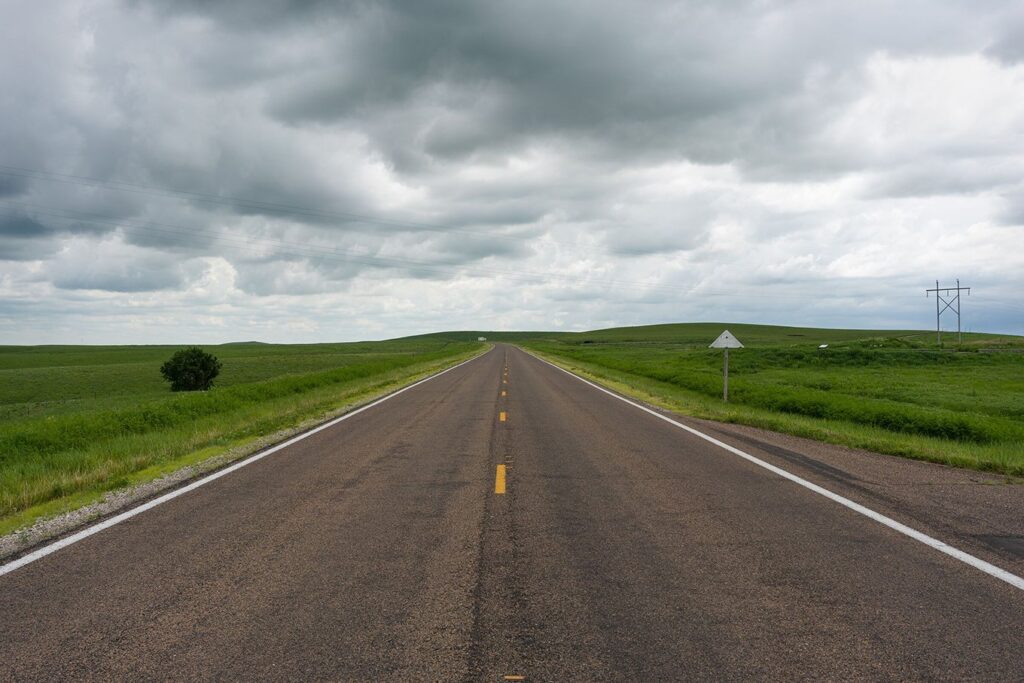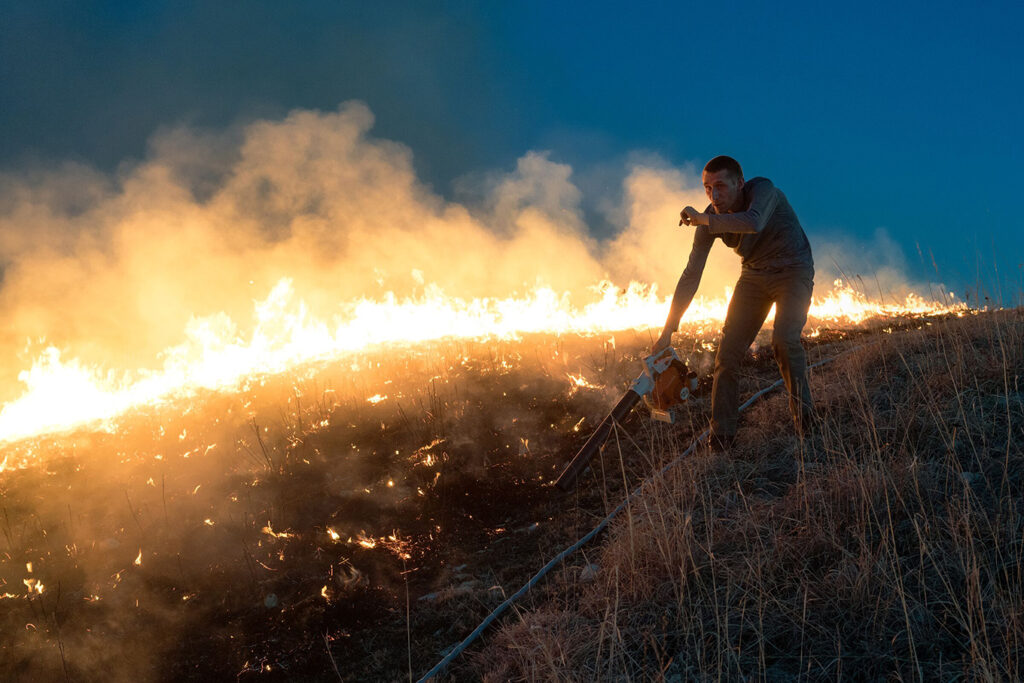In the Flint Hills of Kansas there are cattle ranches and art galleries, old barns and modern architecture, ghost towns and growing cities. Most of all there is the last stand of tallgrass prairie in America.

What is love? One name for it is knowledge.
— Robert Penn Warren, Audubon: A VisionThe prairies are nothing but grass as the sea is nothing but water.
— William Least Heat-Moon, PrairyErth
Of all the odd jobs my brother and I were conscripted into growing up — cutting tree sprouts, stacking hay bales, digging up adult-sized stalks of noxious pokeberry — there was one I never minded: pasture burning. It happened once a year, in the spring. My father watched the weather forecast religiously, waiting for that rare Kansas day when the wind was out of the south and gusting between five and fifteen miles per hour. Then we’d hike out to the fenced-in five acres behind our house that we called the “native grass.”
The native grass was distinct from the “pasture,” which was planted in cool-season brome and lay on the other side of a long hedgerow. The native grass had once been tilled. But back in the mid-1980s, shortly after my parents bought the farmstead south of Marion, they seeded it in Kaw big bluestem (Andropogon gerardii Vitman) and Osage Indiangrass (Sorghustrum nutans L. Nash). Along with the baled hay we stacked in the wood barn, the grasses provided forage for our family’s horse, as well as habitat for ground-nesting birds like the bobwhite quail or the western meadowlark.
At one time, the property had been a working farm, but by the time I was young, the rusted metal corrals served mainly as the setting for an elaborate version of tag dreamed up by my brother and me. My parents had grown up poor, helping their families farm and run cattle in a dusty town called Ness City, in western Kansas. After college, neither wanted to return. My father got a job with the Natural Resources Conservation Service, an agency of the USDA, while my mother worked part-time as a landscape designer. And so the grassy fields around our house were grazed only by our horse, a gray gelding named Easter’s Lad.

Like all tallgrass prairie, our native grass was sustained, counter-intuitively to my young mind, by fire. On burn days, we wore jeans and boots and long-sleeved shirts, as well as bandanas, which we drew up over our noses and mouths like outlaws to keep from inhaling the smoke. The scent of burning prairie is sharp and sweet, acrid enough to make your eyes water but not putrid or polluted, like the smell of a car fire. It’s clean, complex. The aroma is preserved in my memory, as is the soft puff that the burned grass, little more than stiffened carbon, made as it disintegrated underfoot.
We lit firebreaks along the edges of the property, while a draw served as a natural break to the west. Dad did the lighting. He raked a clump of dried grass, set it alight with a match, and then dragged the rake along the southern edge. The fire raced north, like a red-orange ribbon stretched across the landscape. You could feel the heat 50 feet away. Sometimes my brother and I were joined by classmates who, like us, loved the adrenaline rush of watching 20-foot-high flames race across the grass. We patrolled the edges of the grass, ensuring that the fire didn’t escape the fence line or burn back into the brome pasture. Shovels and spades were our fire extinguishers. If the fire leapt the draw, or ate past the barbed wire, we sprinted over and used our shovels to smother it. We’d been taught to be gentle: violent whacking just fanned the flames. Instead, we started at the edge of the fire and, with our shovel blades flush with the ground, pressed down and made a back-and-forth motion, as if frosting a cake. By the end of the day, the blades of our shovels were black. Exhausted and euphoric, we tromped back to the house, leaving footprints in the charred landscape, as if through a dusting of dirty snow.
As exciting as burn days were — and as a kid, they beat any fireworks show — their purpose was a mystery to me. I understood fire was somehow necessary, a type of routine maintenance, like changing oil or cleaning out gutters. But I didn’t know why, or what it did. It seemed illogical that killing something could be life-sustaining. And yet it never failed that, less than a week after the burn, tiny green shoots would appear, turning the ashen landscape a pale green.
Read the full essay in Places Journal.